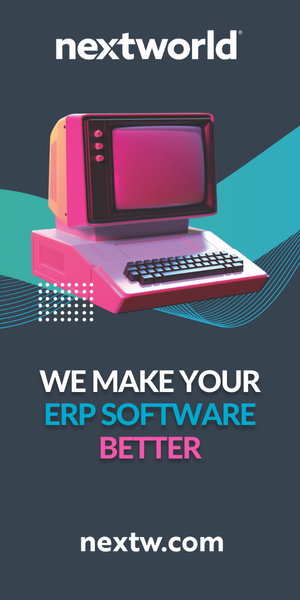As cloud solutions evolve, there is a shift from horizontal to vertical industry-tailored applications. Bonnie Tinder, CEO at Raven Intel, explains why this shift is taking place at breakneck speed and what it means for customers.
In enterprise software – one size fits no one. But, in the early days of public cloud software, vendors have done just that and built horizontal applications, or those that have had to fit a wide variety of customer types. As more and more companies have leaned into cloud applications and customer demands have increased, leading software vendors have provided innovation and adopted industry verticalization as a primary strategy to help them stay ahead of the curve and prioritise what’s most important: the customer experience.
For many businesses in the past, moving core business applications to general public clouds was burdensome because they had so heavily customised on-premise applications or legacy industry-specific software. Moving to the cloud would mean sacrificing required functionality – or necessitating customisations which are time-consuming and costly. The rise of industry cloud software has the potential to accelerate digital transformation and take the risk out of cloud migrations, as well as providing an enticing proposition for many businesses that have been slow in the move to cloud applications.
Benefits and long-tail effects of verticalization
Verticalization brings both long-tail and immediate benefits to the vendors, consulting partners and end customers who utilise this approach. For vendors and partners, it requires hiring and training industry-specific focussed experts within all core job functions of the organisation – particularly within sales and product development. This focus allows for a greater level of understanding of customer business needs, industry best practices and development of niche customer references and materials, alongside a keen understanding of industry-specific trends and nomenclature. It also helps attract and build credibility with potential customers during the sales process and implementation. Software vendors who view the market in verticals and build for these audiences will also drive better adoption of the technology, decreased training time and build more loyal customers.
For customers, this approach provides immediate access to tools and applications optimised for specific industry use cases, as well as APIs, common data models and workflows tailored to common needs. Choosing a software vendor and partner that have deep industry knowledge and expertise can provide access to best practices and methodologies which would not be possible with horizontal software.
Challenges providers face
Conversely, the same benefits to verticalization can cause challenges for software vendors and consulting firms which lead transformation efforts with clients. With a focus toward creating unique products and experiences for each vertical, there’s an expectation not only to build highly customised functional tools but also to be on the leading edge of technology. If a vendor or partner focusses on multiple industries (as many do), the same quality of people and product expertise needs to cross all vertical business units. In addition, every product line needs to have integration capabilities with various other industry-specific software. Market factors may also impact supply and demand. For instance, during the height of the pandemic, the demand for digital transformation projects and software for retail and healthcare soared, while higher education waned. Staffing and resources will be impacted differently depending on the industry’s economic climate. While every industry may have similar needs for 75 percent of a particular type of functional software, the tailoring and nuances of the other 25 percent can be vastly different. For example, in a human capital management (HCM) system, all companies need to hire, compensate and manage employees, but the nuances between a predominantly white-collar financial services organisation are vastly different than that of a retailer with a highly distributed, predominantly hourly workforce.
For customers: what to consider
1. Support to scale and team resources with industry expertise
One of the greatest benefits of cloud applications is the scalability it enables within organisations. Decision makers should look at vendors that can support their future state organisation and make it easily possible. Vendors who can clearly demonstrate examples of other customers of the same size and scale, with support staff and partners who are trained not only as system technicians but who have a high degree of industry-expertise, is key.
The cloud also enables organisations to reap the benefits of instantaneous software updates and constant data backup, helping to keep their organisations running safely and securely with minimal maintenance required. Server response time is reduced and strengthened across the globe, making it possible to offer more reliable service to customers regardless of the customer or organisation’s physical location. Other organisations might be looking for scalability and support to automate and accelerate an area of their business, or allow for the expansion of a new service line.
For retail organisations, curbside pickup didn’t exist five years ago. However, with a strong technology stack and cloud infrastructure behind them, retail organisations were able to use their software to create a new experience for their customers – from customers having visibility into store-specific inventory to being able to notify team members about which parking spot they’re in for curbside pickup.
This need doesn’t end with the cloud software, though. Such a large change in cloud infrastructure requires a strong implementation partner to help make the most of your new software. Your chosen partner needs to have a team of experts who know how to maximise your choice for your industry and are familiar with the way that their chosen software can scale – including any limitations it brings.
“Such a large change in cloud infrastructure requires a strong implementation partner to help make the most of your new software. Your chosen partner needs to have a team of experts who know how to maximise your choice for your industry”

Peer review site, Raven Intelligence measures project success through reviews written by customers who have recently gone through a digital transformation project. When a software implementation team’s systems expertise is rated at or above 4/5, the overall satisfaction score is likely to go up an average of 1.5 satisfaction points (out of 10). Rather than adapt your processes to the software, your expert consultants should be helping you make the software work for your organisation and understand how to work around any limitations that come with it, not the other way around.
“Experience and knowledge of consultant(s) are key. Ensure the consultant knowledge goes beyond theoretical and possesses practical system and implementation experience. Ability to understand and document business processes and practices and offer ‘best practice’ recommendations AND translate those to system configuration is also key.” (Quote from business lead from a manufacturing company implementing SAP SuccessFactors with Rizing HCM).
2. Intuitive and forward-thinking experiences
A key benefit of verticalization is that cloud providers know exactly who their customers are, and they can build for their exact needs. Customers shopping for a cloud solution will expect intentionally built solutions and will be quick to drop solutions that don’t truly cater to their demands.
In order to do this, cloud providers will need to invest in a team of experts in any given industry within which they offer solutions, allowing these teams to build based on their own expertise and knowledge. Having ‘walked the walk’ before, these experts will have a far better understanding of the functionality, integrations and future enhancements needed for a successful and empowering customer experience which not only attracts customers but retains them.
This also enables the product builders to help anticipate new features that will be needed as the market changes, how they should be built and how to prioritise enhancements. Time-to-market will also be decreased, as there won’t be extended time spent trying to learn or survey the market since the team behind the scenes isn’t new to the industry. These expectations will hold consistent to the consulting partners supporting implementations, as customers need partners who can help them think beyond ‘the way it’s always been done’, adopt best practices, and maximise their cloud solutions.
3. Data security and compliance
The transition into remote work means that organisations are at an increased risk of attack and since March 2019, the FBI has reported a whopping 300 percent increase in cybercrimes, phishing and ransomware attacks as consumer expectations and data security requirements only continue to rise. Customers seeking out a new cloud provider will have specific requirements of data security, compliance and regulation requirements needed for them to even consider making a move to a new solution.
For healthcare cloud providers, compliance with the Health Insurance Portability and Accountability Act of 1996 and patient data will be at the forefront of the mind when designing the user experience, but, further than that, the authentication and user roles that can access said data. For financial institutions or organisations that process payments, being mindful of Payment Card Industry Data Security Standard compliance will be critical when building software that creates user permissions, tracks activity and protects cardholder information.
While these responsibilities ultimately fall back on the organisation itself, cloud providers that check the box for their basic requirements are far more likely to acquire customers and retain them. The consulting partners supporting highly regulated industries have even more pressure to be industry experts and will have a higher demand for certifications and experience in a given requirement, as a misunderstanding of a requirement or process can have drastic impacts on the organisation and its ability to service its customers.
“The consulting partners supporting highly regulated industries have even more pressure to be industry experts and will have a higher demand for certifications and experience”
4. Enhanced focus on collaboration
As customer expectations continue to rise, an enhanced focus on collaboration will also be non-negotiable when looking for the right cloud solution. Communication and collaboration no longer happen in the places that they used to, but that doesn’t make them any less critical to the success of an organisation. Cloud software built right for an industry should break down barriers between departments and build trust between the customer and organisation. Similarly, consulting partners used will be held to the same standards and organisations will expect strong communication and collaboration throughout the implementation experience.
For example, retailers need the ability to communicate with customers to let them know inventory levels, delivery estimates and store information, and their cloud software needs to support these activities and requests. Doctors, nurses and medical facilities need to be easily reachable and offer the ability to schedule and ask questions, while keeping patient data safe. This might also mean connecting various different operating systems into a single source of truth to enable more efficient collaboration between teams.
Wrap up
As organisations continue to turn to the cloud, the number of options available for them to choose from grows exponentially each year. In order for these cloud organisations to be successful and meet the demands of their customers, verticalization will be a key strategy to attract and retain users. But that doesn’t mean verticalization won’t impose challenges – rather, it will require organisations to invest in specialists for each vertical and educate their team to fully understand customers’ needs. The most efficient and effective cloud vendors will be identified through their deep approach to vertical functionality with a strong internal team and implementation partner ecosystem to provide the support customers need.






